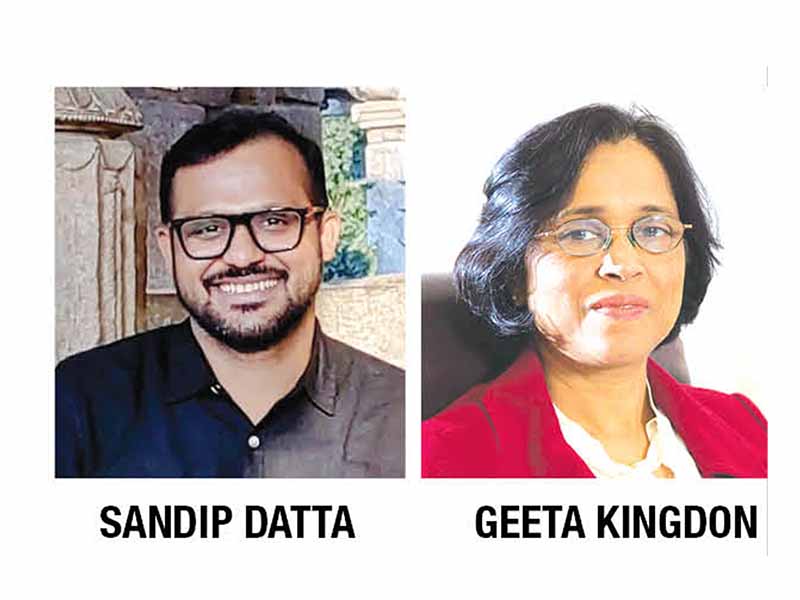– Sandip Datta is Assistant Professor, Delhi School of Economics & Geeta Gandhi Kingdon is Professor Emeritus of University College London
In 2019, the average number of pupils in 500,000 government schools was a mere 31, translating into a 13.3:1 pupils-teacher ratio. There is no teacher shortage at all if students and teachers are properly deployed
One of the enduring curiosities of Indian education is perpetual
According to the official District Information System of Education (DISE) 2019-20 data, the national pupil-teacher ratio in government elementary schools was 25:1. Given that the Right of Children to Free & Compulsory Education (RTE) Act 2009, mandates a pupil-teacher ratio norm of 30:1, there is no teacher shortage in the sense that if students and teachers are properly deployed, the mandated norm can be achieved without hiring any new teachers.
Applying RTE norms (e.g, at the primary level, two teachers for schools with “60 or fewer” pupils, and one additional teacher for every additional 30 students or a fraction thereof), some schools suffer teacher shortages, some have just the right number and some have surplus teachers. If surplus teachers from the last category are relocated to those suffering shortages, the net shortage is only a quarter million (2.5 lakh rather than 10 lakh). In other words, three-fourths of the shortage flagged by NEP 2020 is not a shortage at all!
Indeed, even the 2.5 lakh shortage estimate becomes an overstatement if there is correction in official data for inflated student enrolment. Reports of the Comptroller and Auditor General and the Mid-Day Meal Authority, say that government schools seriously overstate enrolments for greater allotment of state benefits (sweaters, bags, grains for mid-day-meals). Research by educationists using per school data on students and teachers indicates that correction for such overstatement converts the net shortage of 2.5 lakh teachers into a surplus of nearly 1 lakh teachers.
Moreover during the past few years, a staggering number of parents have moved their children into affordable budget private schools (BPS). During the years 2010-19, 27 million children exited public schools for BPS. Though during the Covid pandemic this trend reversed to some extent, post-pandemic it has resumed. This mass migration has created an extremely large number of ‘minified’ schools with very low pupil-teacher ratios. In 2019, the average number of pupils in approx. 500,000 government schools was a mere 31, translating into a 13.3:1 pupil-teacher ratio.
The RTE Act requires that even tiny schools with “20 or fewer” pupils employ two teachers. The Act doesn’t prescribe a minimum size for schools, thus maintaining tiny unviable schools that provide scant socialisation opportunity to children.
Our research shows that maintaining surplus pools of teachers and a nationwide PTR (pupil-teacher ratio) of 25:1 rather than the prescribed maximum of 30, is already costing state governments Rs.29,000 crore per year by way of excess teacher salaries. If new teachers are recruited to fill the claimed 1 million teacher vacancies as per the NEP 2020 recommendation, the national PTR would fall further to 19.9:1, and would cost state governments an additional Rs.64,000 crore every year (in 2020 prices) by way of teacher salaries for the next 30 years or more, since policy in India does not permit teachers to be laid off once they are hired. Moreover, when you add the cost of currently surplus teachers, the total expenditure adds up to a gargantuan Rs.93,000 crore (US$ 12.6 billion) per annum at 2019-20 prices. Over 70 countries have lower GDP than this amount.
In the circumstances there is urgent need to consolidate tiny government schools. Due to the emptying out of government schools in 2019-20 there were 1.3 lakh ‘tiny’ public schools with less than 20 pupils. These schools had — on average — merely 12.7 pupils per school, two teachers per school, and a very low pupil-teacher ratio of 6.7:1. Teacher salary expense per pupil in these schools averages Rs.7,312 per month or Rs.87,852 per year.
This India-wide problem requires the intervention of the Central government, to incentivize the states to initiate school consolidation (merging neighbouring public schools). For instance, no Central resources should be provided for hiring new teachers in at least the 13 major states in which there is a net teacher surplus, till they consolidate tiny schools into larger schools and transfer surplus teachers to schools with a teacher deficit.
Instead of appointing yet more teachers in emptying minified schools, the solution is fewer higher-quality pedagogically and economically viable schools, with DBT (direct bank transfer) funding for transport to ensure that access is not jeopardised in the pursuit of quality.